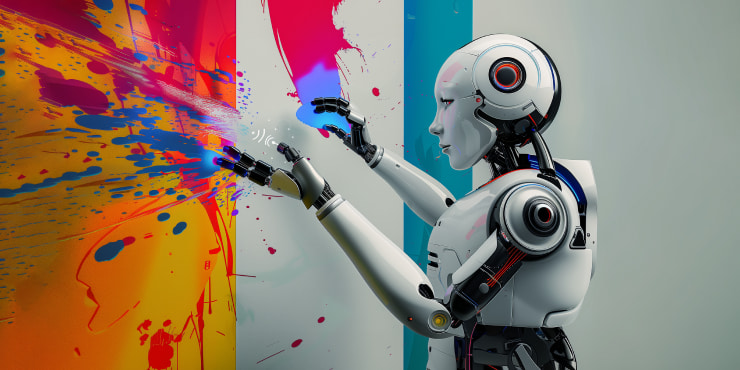In the digital era, AI for inclusive design is transforming how we approach accessibility and creativity. By integrating artificial intelligence into design processes, we are witnessing a revolution in creating more accessible and inclusive digital environments. This article explores how AI is fostering inclusivity and creativity, offering insights valuable to digital creators worldwide.

What is Inclusive Design?
Inclusive design is about creating products and environments that are accessible to everyone, regardless of their abilities or disabilities. It ensures that digital products are usable by as many people as possible. By considering diverse user needs, designers can create solutions that are not only functional but also equitable.
The Role of AI in Inclusive Design
AI plays a crucial role in enhancing inclusive design by offering tools and technologies that can adapt to various user needs. From voice recognition to personalized interfaces, AI provides innovative solutions that make digital products more accessible.
AI-Powered Accessibility Features
One of the most significant contributions of AI is in developing accessibility features. For instance, AI for logo animation provides dynamic and customizable options that cater to different user preferences. Speech-to-text and text-to-speech tools are also examples of how AI facilitates communication for those with hearing or speech impairments.
Personalized User Experiences
With AI, digital creators can offer personalized user experiences that cater to individual needs. AI algorithms analyze user behavior and preferences to tailor content and features. This personalization enhances user engagement and satisfaction.
AI Tools for Inclusive Design
Several AI tools are available to assist designers in creating inclusive digital experiences. These tools simplify the design process and ensure that accessibility is a priority. For example, AI plugins for graphic software provide designers with intuitive features that automatically adjust designs for accessibility.
AI in Graphic Design
The impact of AI in graphic design is profound. AI algorithms can generate design elements and suggest enhancements that improve accessibility. This automation allows designers to focus on creativity while ensuring their designs are inclusive.
AI and Artistic Expression
AI is also revolutionizing artistic expression. By using AI, artists can break traditional boundaries and explore new creative territories. AI for artistic expression empowers artists to create works that are both innovative and accessible.
Challenges of AI in Inclusive Design
Despite the benefits, there are challenges associated with AI in inclusive design. Ensuring that AI algorithms do not introduce biases is critical. Designers must be vigilant and ensure that AI tools are developed with diversity and inclusion in mind.
Addressing Bias in AI
Bias in AI algorithms can lead to exclusionary practices. To combat this, it is essential to train AI models on diverse datasets and continuously evaluate their outputs for fairness. By doing so, designers can ensure that AI-driven solutions are truly inclusive.
Ethical Considerations
Ethical considerations are paramount when integrating AI into design processes. Designers must consider the impact of their designs on all users and strive to create solutions that respect user autonomy and privacy.
The Future of AI in Inclusive Design
The future of AI in inclusive design is promising. As AI technologies continue to evolve, they will offer even more sophisticated tools for creating accessible digital environments. Innovations in AI will drive the development of new design paradigms that prioritize inclusivity.
Emerging Technologies
Emerging AI technologies, such as machine learning and natural language processing, will enhance the capabilities of inclusive design. These technologies will enable more intuitive and user-friendly interfaces, making digital products accessible to a broader audience.
Collaboration and Innovation
Collaboration between AI developers, designers, and users is essential for advancing inclusive design. By working together, these stakeholders can create innovative solutions that address the diverse needs of users and foster a more inclusive digital landscape.
Conclusion
In conclusion, AI for inclusive design is transforming the way we approach accessibility and creativity. By leveraging AI technologies, digital creators can develop products that are not only innovative but also accessible to all users. As AI continues to evolve, it will play an even more significant role in shaping the future of inclusive design.

FAQs
What is the role of AI in inclusive design?
AI enhances inclusive design by offering tools that adapt to diverse user needs, making digital products more accessible.
How can AI address bias in design?
To address bias, it’s essential to train AI models on diverse datasets and evaluate their outputs for fairness, ensuring truly inclusive solutions.
What are some challenges of using AI in inclusive design?
Challenges include potential biases in AI algorithms and ethical considerations regarding user autonomy and privacy.
For more insights on AI’s role in design, visit AI Graphic Design.







